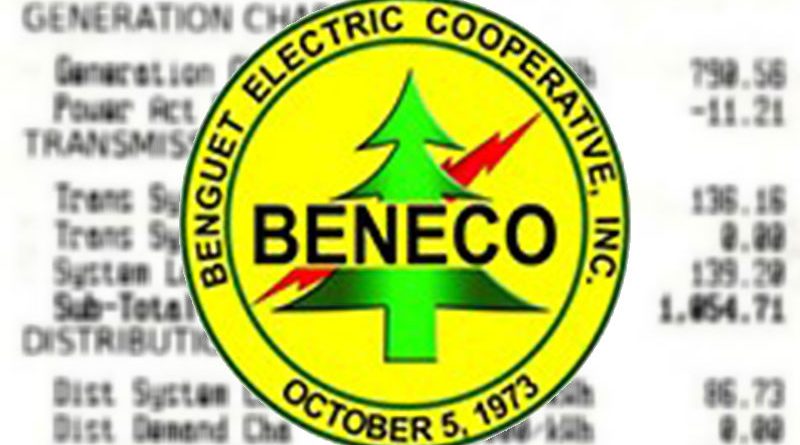On September 13, 1986, the Cordillera Peoples Liberation Army (CPLA) led by former rebel priest Conrado Balweg signed a “sipat” or peace agreement with the Philippine government under former President Corazon C. Aquino while she was still exercising both executive and legislative powers under the revolutionary government established after the 1986 bloodless EDSA People Power Revolution. The struggle of Cordillerans for peace and just development date back to the early 1970s at the height of the fight against the Cellophil project in Abra and the Chico dam projects in Kalinga. These two mega-development projects totally ignored the rights of indigenous peoples virtually killing them with the destruction of their homelands.
The consolidated efforts of militant organizations with that of conservative groups and influential leaders in fighting for the rights of indigenous cultural communities got a boost from the members of the Constitutional Convention that was crafting the 1987 Philippine Constitution when they included a provision for the establishment of autonomous regions in Muslim Mindanao and the Cordillera as part of the fundamental law of the land. Despite the inclusion of such provision in the Constitution, the road to autonomy in the Cordillera remained rough. While the Autonomous Region of Muslim Mindanao was created, the Cordillera had to settle for Executive Order (EO) No. 220 that created the Cordillera Administrative Region (CAR) bringing together the provinces of Abra, Benguet and Mountain Province and Baguio city from Region I and Ifugao and the then Kalinga-Apayao from Region II as a special temporary administrative region. Fr. Balweg nearly rejected EO 220 because what he wanted was for the grant of autonomy to the region but other Cordillera leaders prevailed upon him to accept it rather than have nothing at all.
The quest for regional autonomy continued at the House of Representatives until the crafting of Republic Act (RA) 6766 or the First Organic Act of the Cordillera. However, this overwhelmingly rejected by Cordillerans, except for Ifugao. The Cordillera peoples rejected this because Congress passed a totally watered-down version. Due to an anomalous situation of only one province voting for the Act, the Supreme Court (SC) ruled that one province cannot become an autonomous region, thus CAR had to be intact for the meantime.
During the Ramos administration, Congress passed Republic Act 8438 or the Second Organic Act of the Cordillera which was again overwhelmingly rejected by the people except for Apayao.
During Gloria Macapagal-Arroyo’s first term in 2001, she issued an order establishing Regional Development Councils that will take care of regional concerns. The Regional Development Council of the Cordillera Administrative Region (RDC-CAR) was created in 2006. The RDC-CAR embraced autonomy as its overarching agenda to spur the development of the Cordillera. It is the leading government agency in the information and education drive on autonomy and is conducting consultations with various stakeholders.
Politicians had been pursuing legislative efforts for the creation of a Cordillera autonomous region with the filing of various bills in both houses of Congress, the latest of which is the House Bill 4649 filed in June 2014 but was only passed upon by the House committee on local government.
For the Cordillera constituency, the drive for autonomy is a response to national neglect and the disproportionate share of benefits from the resources extracted from the region. The growing awareness of Cordillerans on the injustices of the national government to least populated areas is now helping the renewed pursuits for regional autonomy. There had been observed increase in the awareness level of Cordillerans on the real essence of self-governance in terms of crafting and implementing programs and projects that suit the current state of the region. The Duterte administration is now advocating for the shift from presidential to parliamentary form of government which might overtake our clamor for autonomy.
This may be the opportune time for us to define our own aspirations for autonomy and not leave this important task to politicians alone. Let us contribute our ideas on what an autonomous region should be: one that respects our right to self-governance, self-determined development, culture. It should truly respect our rights as indigenous peoples, this being our collective ancestral domain. The Indigenous Peoples Rights Act (RA 8371) provides directions for our autonomous quest in terms of respecting, promoting and protecting our ancestral domains, our cultures, our socio-political institutions, and our right to participate in all matters that affect us. This must guide us as we engage in this autonomy drive and send the clear message to President Duterte that we want autonomy as we define it and nothing more. With his desire for a federal form of government which is a form of autonomy, the president who has promised to attend to the needs of marginalised Filipinos, will surely accede to our clamor for self-governance. Let us put our efforts in collectively crafting our aspirations for a Cordillera autonomous region. It is high time for us to think out of the box for the benefit of the present and future generations of Cordillerans wanting a developed and progressive region.














